September 2016
MiG-
1st Tactical Squadron, Minsk Mazowiecki Air Base,
Polish Air Force 2016
Italeri 1/72
www.gengriz.co.uk
Background Image: MiG-
Have a look at my Friends & Allies pages for more NATO aircraft
Together with the Su-
The Polish Air Force was one of the first export users of the Fulcrum, acquiring
10 aircraft in 1989 to replace MiG-
This is a straightforward “de-
The Italeri kit is generally well regarded in terms of shape and detail. Despite reports to the contrary, I found it a relatively easy build, although the fit of the upper and lower fuselage halves requires care (and a little filler). I started at the nose, carefully matching the stepped join in front of the LERX, then clamped and glued the rear, finally finishing with the middle section. One wing fitted very slightly better than the other, requiring a little more filler in the gap. The engine pods and intakes are not well moulded and require a lot of tidying up. Disappointingly they feature fully closed intake bypass doors (these are intended to enable the MiG to operate from rough strips without fear of FOD) with no interior to the intakes, as well as fully open “gills” on the upper LERX surfaces. A number of modern Russian Air to Air weapons are provided, but these are not appropriate to the Polish example.
Paint is Humbrol enamel, thinned and hand brushed on, with the demarcation between
the upper surface greys merged whilst the paint was still wet, to give the impression
of a soft edge. A light oil wash was used to highlight detail, then a coat of Klear
to assist with the decals and a final satin varnish sealer was applied to finish.
As expected, the decals worked well, although the greys used for the commemorative
markings are probably not correct -
As a de-
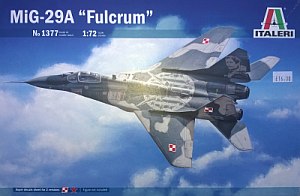
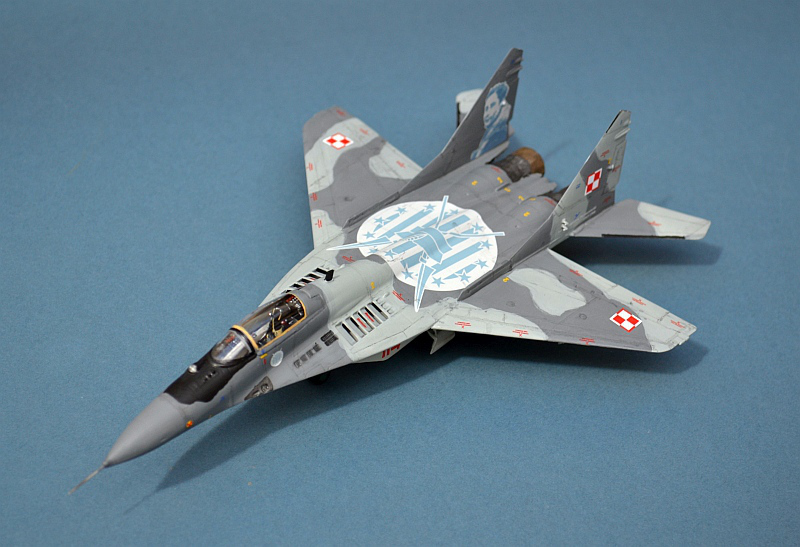
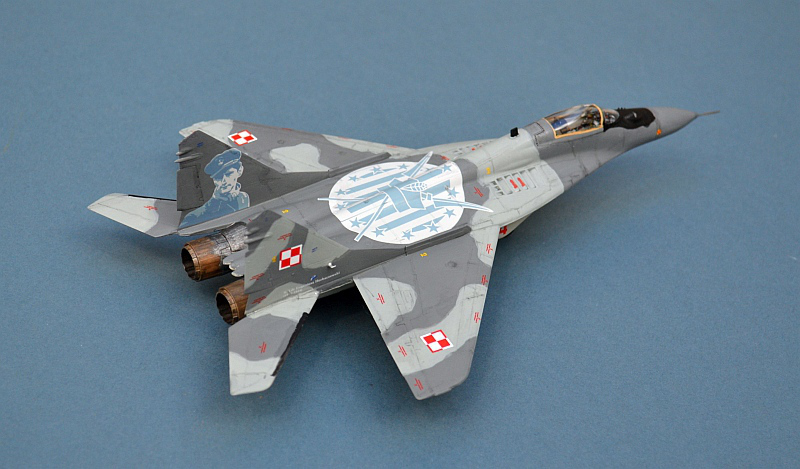

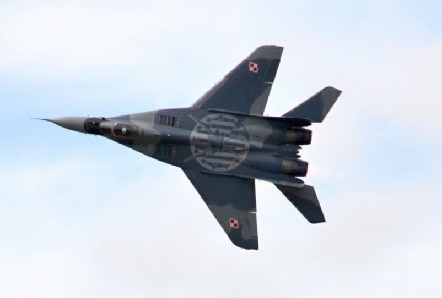
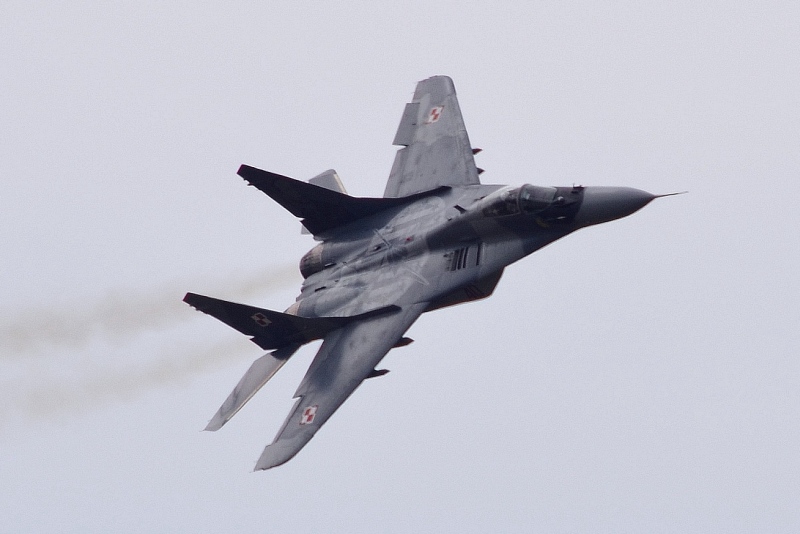
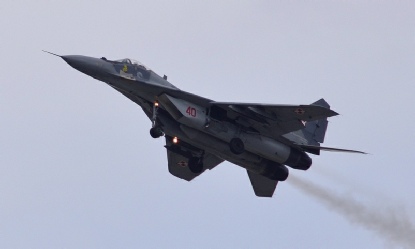
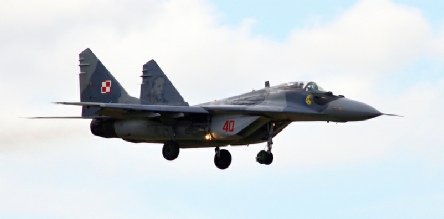
The real thing on display at the RIAT Airshow in 2015 and 2016:
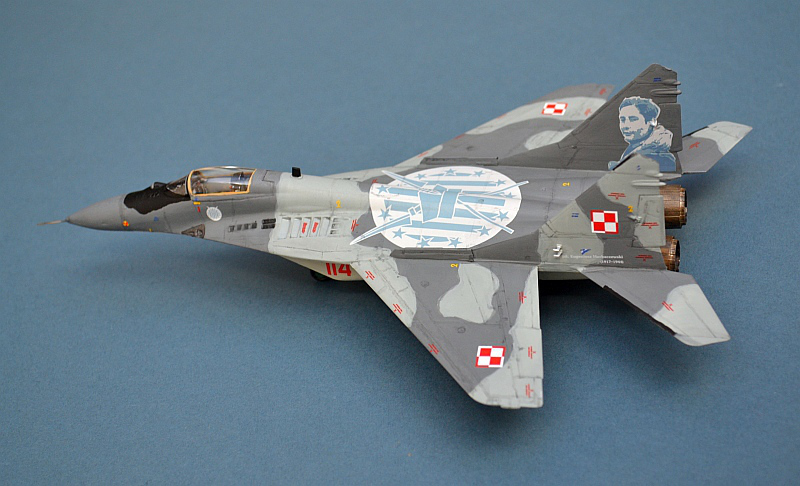

Wait a mo……that’s me, posing in front of a Russian MiG-
Dubai Airshow 1995:
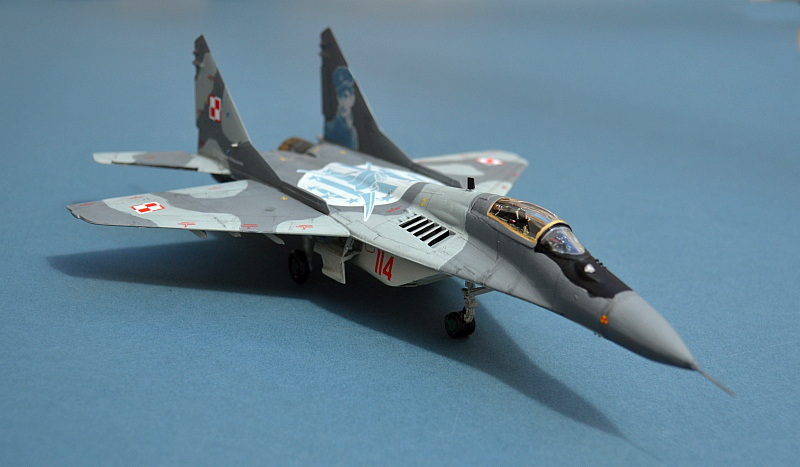
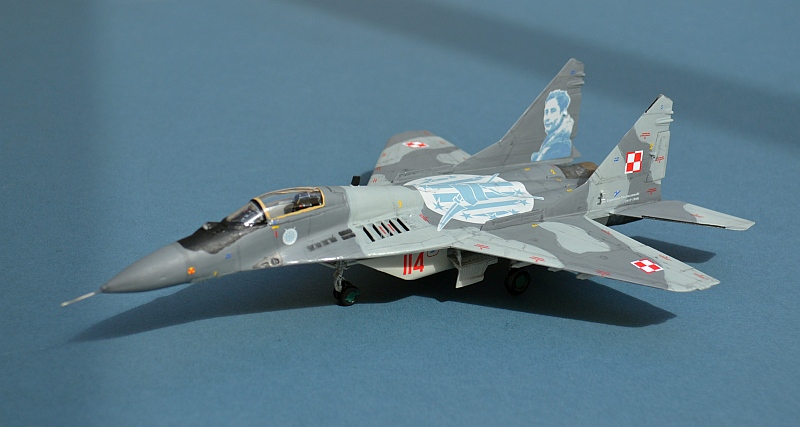
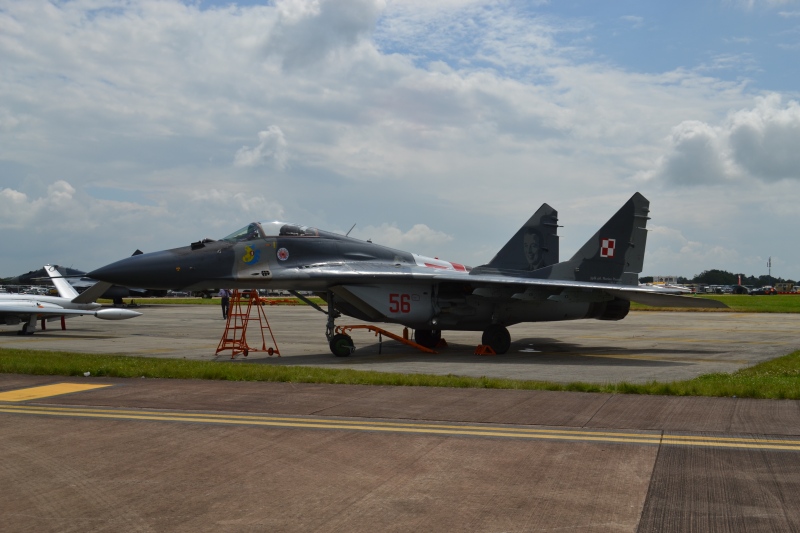
More photos of the real things on display at the RIAT Airshow in 2015 and 2016:
It always irks me when model manufacturers (and indeed, modellers) produce representations
of commemorative markings or famous aircraft, seemingly without knowing who they
honour, or what made them famous. So whose picture is it on the tail of this MiG-
Eugeniusz Horbaczewski (28 September 1917 – 18 August 1944) was a Polish fighter pilot, a flying ace of World War II, also known as "Dziubek" (the diminutive of 'the beak' in Polish).
According to official lists, Horbaczewski was the third highest scoring Polish fighter ace, with 16.5 confirmed kills (16 individual and one shared) and one probable kill. He was awarded several decorations, among others Virtuti Militari IV class (posthumously) and V class, four times Polish Cross of Valour, Distinguished Service Order (posthumously) and Distinguished Flying Cross (twice) (from Wikipedia)
